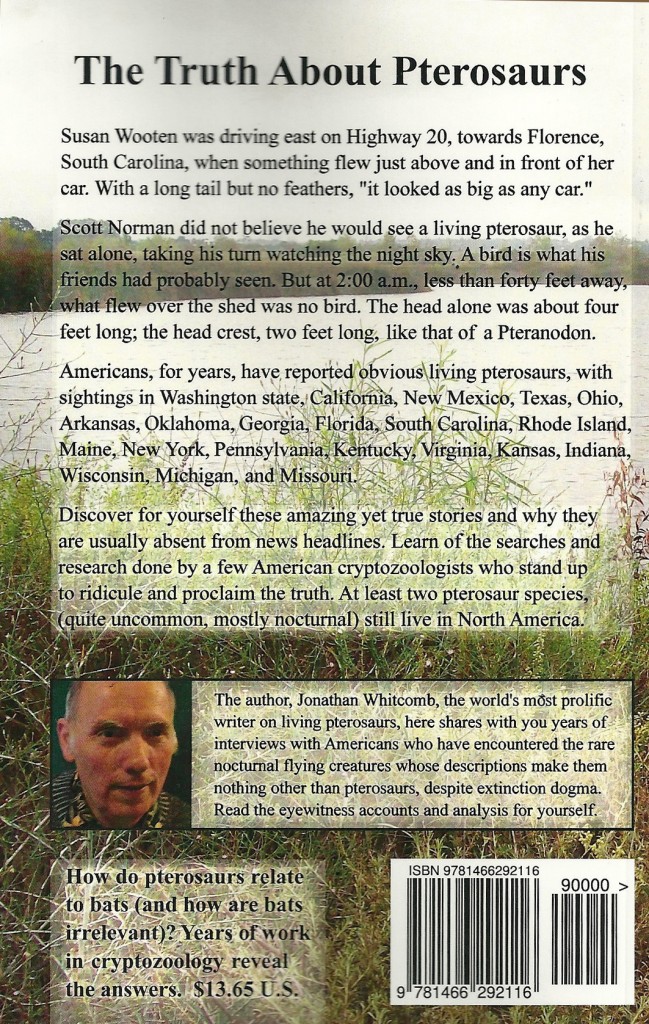While writing about the pterosaur interpretation of Marfa Lights and the “Huntington Hypotheses” for one sighting of those mystery lights of Texas, I came across a Smithsonian blog post by Brian Switek. I do not question the honesty of Mr. Switek; in fact I agree with his point that an amateur video of a Frigate bird is not evidence for a living pterosaur, namely the cryptid called “ropen.” Nevertheless, a number of problems appear and they are serious.
. . . the chief advocates of living dinosaurs turned out to be hucksters, overly-credulous wildlife enthusiasts, or young-earth creationists intent on somehow disproving evolution . . .
The moderate length of that blog post is insuffient to adequately cover more than one of those three seemingly related ideas, but Mr. Switek avoids getting into details, instead criticizing a Salem-News article for mistaking a Frigate bird for a pterosaur. Of course that was a serious blunder in that report by Terrence Aym (and there were other errors in that Oregon news report, errors that Switek seems to have missed), but the error is Mr. Aym’s, not errors of the living-pterosaur investigators Switek soon mentions. A careful reading seems to indicate that Switek is trying to use this to discredit anyone who proposes pterosaurs live in Papua New Guinea.
The fifth paragraph actually names recent living-pterosaur investigators, but Switek seems to use bulverism rather than reasoning:
Then there is the problem of Aym’s sources. Both Blume and Woetzel are creationist explorers who have tried to promote the existence of living pterosaurs and dinosaurs. In fact, Woetzel has gone as far to propose these living pterosaurs as the “fiery flying serpent” of Isaiah 30:6 in the Bible . . .
Switek gives no evidence against any of this, apparently only mentioning the religious nature of Woetzel’s beliefs, as if that were enough to dismiss his ideas about living pterosaurs. I suspect Switek has never thought about Isaac Newton’s relationship to this, for Newton had religious beliefs similar to those of Woetzel.
I suspect Switek is also oblivious to critical responses to paleontologists like Darren Naish, for Switek then says:
Paleontologist Darren Naish has debunked many of the famous ones at Tetrapod Zoology . . .
The problems with this post are numerous, with no room here for many details; but since Switek seems to rely on this post by Naish, consider part of this response to live pterosaur criticism from Darren Naish:
The paleontologist Darren Naish has said, “Fossil evidence demonstrates overwhelmingly that pterosaurs did not survive beyond the end of the Cretaceous.” He fails to realize that no group of fossils can overwhelmingly demonstrate the extinction of any species in any time frame, let alone all species of a general type. That is not what fossils can prove, even if paleontologists were able to recover all fossils that were ever formed.
Rather than delve into any particular eyewitness reports, Switek delves a bit into origin philosophies. He does not use the word “philosophy,” however, using the phrase “science of evolution,” and disparaging creationist philosophy. But in defending traditional ideas about evolution he makes the common reasoning-mistake of protecting his beliefs from every possible outcome, revealing that he is really protecting his philosophy. He states that modern descendants of pterosaurs should not be expected to resemble their ancient ancestors (therefore modern sightings of such creatures he believes must be wrong somehow). Then he immediately turns around by saying, “even if a long-tailed pterosaur were found it would do nothing to undercut the science of evolution.” In other words, whatever happens Switek’s philosophy is correct. I think that reasoning, if it could be called reasoning, is too convenient, revealing that it is a philosophy that is being protected, not science. True scientific reasoning does not include “whatever the outcome, whatever the evidence, my idea must be correct.”



